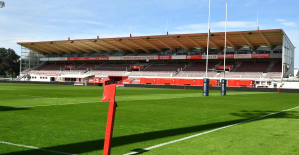A man's voice calls, I startle out of my sleep. I'm lying in bed, but the bed moves. We are traveling from Budapest to Bucharest in a sleeper car. Anna, the Romanian fellow passenger in the bed above me, woke up too. "The man wants a passport," she explains. The train stops, a Hungarian official collects the papers, disappears with them and brings them back after what feels like an eternity.
For me, this “borderline experience” is a 1980s moment – back then I used to travel a lot through Europe by train, often to Italy. There was also a check at the Brenner Pass and you had to wait a long time before you could continue your journey. At that time there was no limitless travel in Europe, even between western countries identity cards were checked.
How great that things are different in the Schengen area today - a privilege that we have long since become accustomed to, but which cannot be taken for granted. What you become aware of when, like me, you are standing at the Schengen external border.
50 years ago you could only dream of freedom to travel, but at least there was Interrail – the first tickets were issued in 1972. Initially, 21 countries took part, on both sides of the Iron Curtain. At that time, however, only young people up to the age of 21 were allowed to buy Interrail tickets, and there were complicated rules. Today there is no longer an age limit and there are many possible uses (see below).
So I fulfilled a long-held Interrail wish; as a young woman I had missed the opportunity. Because I am familiar with Western Europe, my journey takes me through seven countries south-east of Germany that I hardly know. It goes from Berlin to Istanbul, which feels exotic and is reminiscent of the golden era of rail travel, because parts of my itinerary follow the Orient Express.
In Berlin-Gesundbrunnen, at half past ten in the morning, the journey begins in an intercity of the Polish state railways PKP. On blue velvet seats it goes through the flat Brandenburg. Behind Frankfurt a black, red and gold post, then the Dadong-Dadong of a long bridge. We cross the Oder without border controls, there is a red and white post directly on the other bank.
The landscape initially looks the same on the Polish side: flat, a succession of pine and birch forests and endless fields. In between there are a few villages, sometimes huge stables, sometimes new housing estates, and it's slowly getting hillier. That's the nice thing about traveling by train: the slow changes.
Also very nice: the dining cars. I plan to test everyone. Galician pierogi stuffed with potatoes and cottage cheese and garnished with melted onions are served in the PKP wagon. Surprisingly good!
I stay overnight in Breslau (Wroclaw). The station presents itself as a castle with a turret, built in 1903, radiant mustard yellow. It's right in the middle of the city - another advantage of traveling by train. You don't arrive at far away airports. And don't have to look for a parking space.
I walk past magnificent hotels to the hostel where I booked a night in a shared room. So much Interrail feeling has to be. Wroclaw's old town is perfectly renovated. Restaurants in houses with pastel colored facades are grouped around the Gothic town hall. I want to eat Polish and go to any place: the waiter fawns around me in perfect form and serves a fine trio of Baltic herring.
The next morning I am at the train station early. Unfortunately, there is no traditional café there. So I order a cappuccino in a chain restaurant with the last zloty I had changed. That, too, evokes a nostalgic 1980s feeling: paying in foreign currencies.
The departure is confusing: the information board in Poland shows the platform, not the track. All announcements are in Polish only. Here I would be grateful for a "Sssänk ju for träveling" announcement in bad Deutsche Bahn English. I still find my train.
Outside pass by: corn, sunflowers, wind turbines, factories, dachas. In Gleiwitz (Gliwice) I change to the IC 131. On the Czech train, Austrian apple juice is served in the Hungarian dining car. Gorgeous Central Europe!
Train division in Bohumin. We stand for a while, some of the wagons are going to Prague, I'm traveling further south across the Czech Republic. Here the announcements are also in English, and in first class each passenger is given a bottle of mineral water.
I stay overnight in Prerov, a small town in Moravia. A plaque in the village commemorates a certain Alois Negrelli, an early railway pioneer. In 1799 he was born in today's Trentino and then k. Born in Austria, as general inspector of the Kaiser-Ferdinands-Nordbahngesellschaft, he sent a steam locomotive on the route from Vienna to Breclav in 1839. In 1841, operations started from Breclav to Prerov, which belonged to k. u.k. times Prerau was called.
Tourists are so rare here that my apartment landlord asks what brings me to this city. When I say that I'm going to Istanbul by train, he exclaims: “Ah, Orient Express!” This legendary train traveled various routes from Paris via Vienna, Budapest and the Balkans to Constantinople. There were also through coaches from Berlin that traveled to Budapest through Austria's crown lands and then Hungarian Slovakia until the First World War.
The Intercity first goes to Breclav, where I change to the Eurocity. It glides gently through the border triangle – a tip of the Czech Republic juts out to the south here between Austria and Slovakia. After Lanzhot (Landshut) the train reaches Slovakia, again without border controls. Currency exchange is not necessary, the euro applies here.
The Bratislava train station dates from the 1980s and looks futuristic like a UFO. I can only find my hotel thanks to the navigation app. And I ask myself: how did you find your way in the past? How many city maps would I have had to take with me in order not to get lost? The digital is a blessing, also for analogue travel.
My hotel is an esoteric mixture of Villa Kunterbunt, Dalí and Hundertwasser. The hotelier hands me an information sheet - you can buy pills to increase creativity and expand consciousness. I give up thanks and prefer to explore the old town.
There I treat myself to a Pressburger Kipferl, first mentioned around 1600 as “Bajgel”. To have in the "Konditorei Kormuth", a dream from k. u. k Zeiten, the German name is still on the café today. It's served on delicate porcelain, I feel like I'm in a doll's house with staff.
Another pastry shop sells palacinky, a rolled crepe with a filling, known in Austria as Palatschinken. It is only 55 kilometers from Bratislava to Vienna, and those with a sweet tooth are still at home in both cities. I try a liquid local specialty to go with it. Deep red, it spills into the glass: Ríbezľové – currant wine. Currants are called currants in Austria, and the fruit wine is a cult drink in both countries.
Later, in the esoteric room of my hotel, I look forward to Budapest and the specialties there. And to boarding the sixth train of this voyage of discovery tomorrow morning.
The next day we travel in the dining car, which is called Étkezőkocsi in Hungarian, through the Pannonian lowlands. Of course you have to order a goulash here while the train passes places with wonderful sounding names like Verőce, Vác and Göd.
The conductor checks the digital Interrail ticket. This is activated on the go for every day of travel - works without any problems. There are many travelers with Interrail tickets, he says, but you can't spot them straight away. Not like it used to be, when all Interrailers wore huge backpacks with an outer frame.
I only travel with a small backpack - and I'm happy about it, especially in Budapest. I don't have a hotel room here because I drive on in the evening. Unfortunately, a lot of things are not going smoothly in the Hungarian capital.
I wander around the train station between a safe deposit box that requires Hungarian coins (which I don't have), two ATMs (neither of which work) and a money changer (which doesn't give me enough forints). Matching the train journey, I want to go to the railway museum. The first taxi driver I try tries to rip me off. So I tediously look for a bus connection, but I can't find a ticket machine.
In the end, a friendly (metered) taxi driver takes me there and I wander around the site for a couple of hours with luggage. It's worth it: In the railway park you can inspect dozens of wagons and 16 steam locomotives. Many have German inscriptions from the k. u.k. Time, others wear a red star from the communist era.
Also on display is an old dining car that may have traveled the Orient Express route. At one stand there is a tempting smell, I buy a Kürtőskalács, a tree cake that is the same color as the grey-black steam locomotives.
I'm looking forward to the night drive. Unfortunately, there is no restaurant at the formidable Budapest East Train Station (Keleti pályaudvar), but I'm speculating on the dining car anyway and only buy chips and nuts with the last forints. Unfortunately, the night train runs without a train restaurant, the conductor just laughs when I ask about it.
The sleeping car only costs 28 euros extra on the Interrail ticket. There is real bedding and a sink. There are two of us in the triple compartment: Anna from Romania, who was visiting her son in Budapest, is lying on top of me. We soon snuggle up in bed until the conductor wakes us up to the border control described at the beginning. Passports and we are strictly checked twice, when leaving Hungary and when entering Romania.
After the border I can't fall asleep at first. It doesn't matter, I think, because it's nice to roll through the world at night. And watching through the window the bright star to the north that accompanies us. In between always illuminated stations. The regular rattling of the train has the effect of a little night music, and at some point it sends me to sleep.
Such a beautiful waking up in the early morning red, Romania presents itself as a wonderfully hilly country! It goes through Transylvania. We stop in Brasov (Kronstadt) with its futuristic train station, curved concrete on the platform. Anna and I share our coffee and the rest of my Baumkuchen. There is no WiFi on the train, but we still have internet reception almost everywhere on the way, mostly even LTE, even in the farthest Wallachia.
Arrived in Bucharest, I take a taxi downtown, to the Palace of Parliament. Dictator Nicolae Ceausescu had it built in the 1980s as the “Palace of the People” – the second largest building in the world (after the Pentagon) has over 3,000 rooms and is megalomania turned into stone. The communist boulevards all around are not intended for pedestrians either, you feel tiny and lost. The historic center is more likeable: a single food court. I try a mixture of cevapcici and meatballs, unfortunately it doesn't taste good.
Trains to Constanta start at the Bucharest train station, that sounds tempting: to the Black Sea. The route used to be one of the main routes of the Orient Express. From Constanta they continued by ship to Constantinople. And today? Drive warships on the Black Sea. Luckily there is a continuous rail line to the Bosphorus.
The eighth train on my journey takes me through southern Romania for one day and one night, then through Bulgaria and finally via Edirne to the Bosphorus. Exciting!
I share the four-seater compartment in the couchette car with a French couple and with Eesa from South Africa. He is studying electrical engineering in Istanbul. The couple visit their daughter in Istanbul. "We flew so much," says the mother, "we'll leave that to the young people now. And take the train.”
The conductor wears shorts and flip-flops and only puts on his uniform at the border. There, the Romanian border official studied Eesa's passport for a long time. His EU visa expires at midnight, but the train only leaves Bulgaria at half past midnight. "I don't know if the Bulgarian colleagues will let you into the country," she says, "but you can try."
Eesa risks it. We drive across the infinitely wide Danube, the border river between Romania and Bulgaria, stopping in the Bulgarian border town of Ruse. Again all passports are collected. But Eesa gets his back too. Breathe a sigh of relief in our compartment.
Then a good one-hour stay in Gorna Orjahovitsa in northern Bulgaria. We get out to stretch our legs when suddenly our wagon drives away. We want to run after them, but our conductor stands next to us and explains: "The train is divided here, to Sofia and Istanbul."
The journey continues. My main occupation is looking out. train window cinema. You can think about the world or not think at all, you can take in landscapes and cities. The French woman traveling with her has a similar view: "It's so nice to be slowly getting closer. I found Vienna similar to Paris. Budapest already different, and Bucharest really foreign. If you were to fly, you would miss that.”
The Turkish border is reached in the middle of the night. Lots of barbed wire, dazzling lamps, the EU external border makes you think of the GDR death strip. It is depressing to see how strict borders can still be today. On the Turkish side, the conductor shoos us out, takes our passports and leaves our luggage. At the counter, the officer looks you in the face and stamps your passport.
We board the last stage to the Istanbul-Halkali terminus. From there I take the subway to Sirkeci, the former terminus of the Orient Express. Exhausted and happy, I drink a sweet Turkish tea in style in a train station café. And I am immensely happy to have arrived at the Bosphorus after seven days through eight countries.
There are different Interrail tickets with which you can explore 33 European countries including all of Turkey by train. Unlike in the past, there is no age limit for the ticket. Price examples: Seven days of train travel in one month costs 335 euros in second class and 446 euros in first class, ten days in two months cost 401/534 euros, a monthly ticket is available for 670/893 euros, three months cost 902/ 1202 euros to book. There is a discount for people under 27 and over 60 (interrail.eu/de).
Additional seat reservations are required for many journeys (and for all night trains). These can be booked via the Interrail website or the Eurail app. A new reservation is required for each transfer. That's not very uncomplicated. In order not to make a mistake and not get stranded on the way, you can get help from travel agencies specializing in train travel, for example from the terminal station in Berlin (kopfbahnhof.info) or from Gleisnost in Freiburg (gleisnost.de), but there is a fee per booking due.
Participation in the trip was supported by Interrail.eu. You can find our standards of transparency and journalistic independence at axelspringer.com/de/Werte/downloads.

 United States: divided on the question of presidential immunity, the Supreme Court offers respite to Trump
United States: divided on the question of presidential immunity, the Supreme Court offers respite to Trump Maurizio Molinari: “the Scurati affair, a European injury”
Maurizio Molinari: “the Scurati affair, a European injury” Hamas-Israel war: US begins construction of pier in Gaza
Hamas-Israel war: US begins construction of pier in Gaza Israel prepares to attack Rafah
Israel prepares to attack Rafah Spain is the country in the European Union with the most overqualified workers for their jobs
Spain is the country in the European Union with the most overqualified workers for their jobs Parvovirus alert, the “fifth disease” of children which has already caused the death of five babies in 2024
Parvovirus alert, the “fifth disease” of children which has already caused the death of five babies in 2024 Colorectal cancer: what to watch out for in those under 50
Colorectal cancer: what to watch out for in those under 50 H5N1 virus: traces detected in pasteurized milk in the United States
H5N1 virus: traces detected in pasteurized milk in the United States Private clinics announce a strike with “total suspension” of their activities, including emergencies, from June 3 to 5
Private clinics announce a strike with “total suspension” of their activities, including emergencies, from June 3 to 5 The Lagardère group wants to accentuate “synergies” with Vivendi, its new owner
The Lagardère group wants to accentuate “synergies” with Vivendi, its new owner The iconic tennis video game “Top Spin” returns after 13 years of absence
The iconic tennis video game “Top Spin” returns after 13 years of absence Three Stellantis automobile factories shut down due to supplier strike
Three Stellantis automobile factories shut down due to supplier strike A pre-Roman necropolis discovered in Italy during archaeological excavations
A pre-Roman necropolis discovered in Italy during archaeological excavations Searches in Guadeloupe for an investigation into the memorial dedicated to the history of slavery
Searches in Guadeloupe for an investigation into the memorial dedicated to the history of slavery Aya Nakamura in Olympic form a few hours before the Flames ceremony
Aya Nakamura in Olympic form a few hours before the Flames ceremony Psychiatrist Raphaël Gaillard elected to the French Academy
Psychiatrist Raphaël Gaillard elected to the French Academy Skoda Kodiaq 2024: a 'beast' plug-in hybrid SUV
Skoda Kodiaq 2024: a 'beast' plug-in hybrid SUV Tesla launches a new Model Y with 600 km of autonomy at a "more accessible price"
Tesla launches a new Model Y with 600 km of autonomy at a "more accessible price" The 10 best-selling cars in March 2024 in Spain: sales fall due to Easter
The 10 best-selling cars in March 2024 in Spain: sales fall due to Easter A private jet company buys more than 100 flying cars
A private jet company buys more than 100 flying cars This is how housing prices have changed in Spain in the last decade
This is how housing prices have changed in Spain in the last decade The home mortgage firm drops 10% in January and interest soars to 3.46%
The home mortgage firm drops 10% in January and interest soars to 3.46% The jewel of the Rocío de Nagüeles urbanization: a dream villa in Marbella
The jewel of the Rocío de Nagüeles urbanization: a dream villa in Marbella Rental prices grow by 7.3% in February: where does it go up and where does it go down?
Rental prices grow by 7.3% in February: where does it go up and where does it go down? Even on a mission for NATO, the Charles-de-Gaulle remains under French control, Lecornu responds to Mélenchon
Even on a mission for NATO, the Charles-de-Gaulle remains under French control, Lecornu responds to Mélenchon “Deadly Europe”, “economic decline”, immigration… What to remember from Emmanuel Macron’s speech at the Sorbonne
“Deadly Europe”, “economic decline”, immigration… What to remember from Emmanuel Macron’s speech at the Sorbonne Sale of Biogaran: The Republicans write to Emmanuel Macron
Sale of Biogaran: The Republicans write to Emmanuel Macron Europeans: “All those who claim that we don’t need Europe are liars”, criticizes Bayrou
Europeans: “All those who claim that we don’t need Europe are liars”, criticizes Bayrou These French cities that will boycott the World Cup in Qatar
These French cities that will boycott the World Cup in Qatar Archery: everything you need to know about the sport
Archery: everything you need to know about the sport Handball: “We collapsed”, regrets Nikola Karabatic after PSG-Barcelona
Handball: “We collapsed”, regrets Nikola Karabatic after PSG-Barcelona Tennis: smash, drop shot, slide... Nadal's best points for his return to Madrid (video)
Tennis: smash, drop shot, slide... Nadal's best points for his return to Madrid (video) Pro D2: Biarritz wins a significant success in Agen and takes another step towards maintaining
Pro D2: Biarritz wins a significant success in Agen and takes another step towards maintaining


















